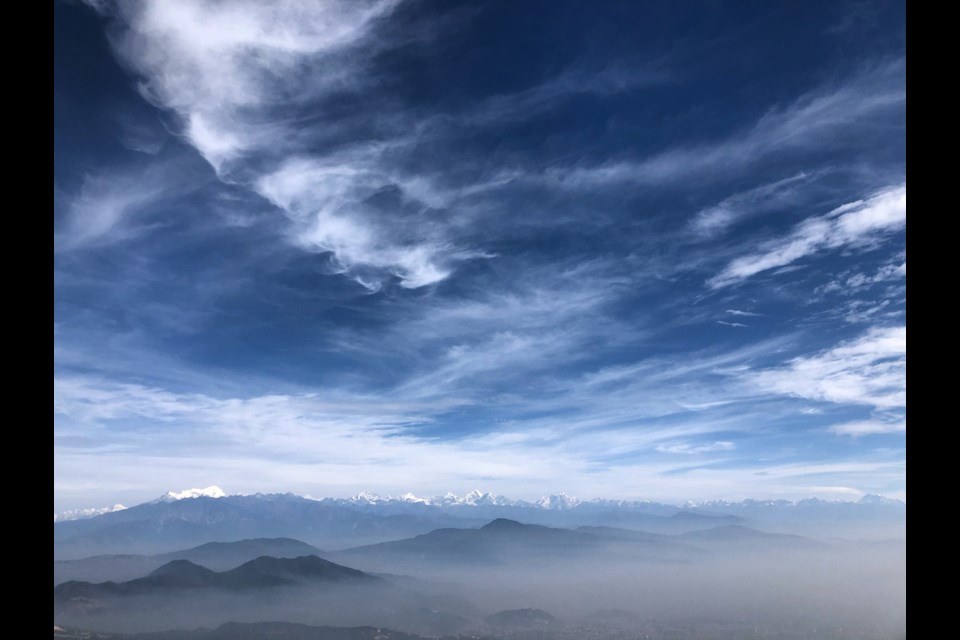Early morning in Kathmandu, Nepal, begins with the gentle chime of a prayer bell. Then, a dog barks. Then another and another. Soon a chorus of street dogs, bells, horns, shouts and whistles will awaken even the deepest of sleepers.
This is how it is in my neighbourhood, Tangal, where I have been living as an expat for nearly two months. I am here as a volunteer with the Centre for International Studies and Cooperation (CECI) as part of the Uniterra program, which works to improve the socio-economic conditions of people in developing countries around the world. I’m working as a website and content developer for Blue Diamond Society, a Nepali NGO that advocates for the rights of LGBTQI folk in the country.
Notably, the organization was key in pushing for legislation that granted citizenship status to third gender people back in 2007, making Nepal the first country in Asia to do so.
Living in Kathmandu can be chaotic for expats and locals alike. Nestled between Tibet and India, the entire country is just a fraction of the size of Ontario, but its population is over 29 million people.
The roads are choked with motorcycles, taxis, busses and rickshaws. Police officers do their best to direct traffic with stop signs and whistles but their efforts are often futile. The air is dusty and hazy – a combination of construction in the aftermath of the 2015 earthquake and emissions from so many vehicles.
Street hawkers steer bikes and wagons overflowing with pomegranates, oranges and roasted peanuts as they shout competitive prices at pedestrians.
But amid the hustle is an odd serenity, as many Hindu and Buddhist worshipers pass by the temples that are found on almost every street corner. Incense burn and garlands of marigolds decorate shop fronts, homes and shrines.
Street art is prolific and beautiful – derelict buildings are made brighter thanks to the creative eye of one of Kathmandu’s many visual artists. Everyone is on the lookout for a patch of sunlight to sit, drink tea, eat momo and keep warm in the brisk winter air.
An unavoidable hub for most tourists is Thamel. The busy neighbourhood is home to many bars, restaurants and souvenir shops selling knock-off North Face gear, yak wool scarves and other knick-knacks. This is where many travellers come to kick back either before or after trekking the glorious Himalayas.
To reach the famed trekking routes, one has to take a roughly eight-hour bus journey (or 25 minute flight) west of Kathmandu to the town of Pokhara. Another central tourist hub, it offers many postcard-worthy pictures of the snowy mountain peaks.
The lakeside town is much more relaxed than Kathmandu, and many travellers prefer its laid-back lifestyle and ample options for cheap, hearty food including Nepali, Chinese, Indian and continental dishes. I went to Pokhara over Christmas – which isn’t celebrated by most Nepalis – to go mountain biking, hike through the nearby villages, sit by the lake and breathe the fresh air.
The journey itself was a highlight of the trip - cramming into a micro bus winding through bumpy cliff-edge roads offers some gorgeous views of the lush forest and river rapids below.
I’ll be in Nepal for another three months – not long enough given how much there is to see and appreciate about this part of the world. Evidently, there is more to the country than tourist shops and mountain views.
I am still learning about the dominant culture of caste and status, the repercussions of the Maoist insurgency and 10-year civil war, the devastating earthquake and the modern-day social and political challenges – including recognition and protection of LGBTIQ people as part of my work with Blue Diamond Society.
Whatever the motivation, this year is the perfect time to consider travelling to Nepal. The government is heavily promoting tourism under the banner ’Visit Nepal 2020’ to encourage foreign travellers to learn more about the country’s cultural heritage, witness the landscape and interact with its people.
To learn more, go to www.visitnepal2020.com.



